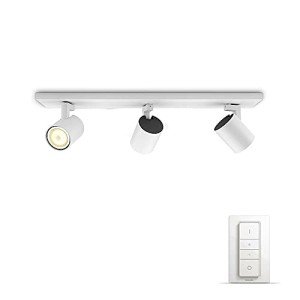Shop Lighting UK: Illuminating the Retail Experience
In the ever-evolving world of retail, the value of shop lighting can not be overemphasized. It not only boosts the visual appeal of products however likewise affects consumer behavior, their mood, and the total shopping environment. With developments in innovation and style, shop owners in the UK have a myriad of choices to pick from when it comes to lighting services. This article will check out the types of lighting readily available, their benefits, and factors to consider for creating the perfect atmosphere in a retail area.
Significance of Proper Shop Lighting
Reliable shop lighting plays an essential function in client experience and can considerably impact sales. Here are some key reasons why appropriate lighting is important for retail environments:
- Highlighting Products: Good lighting draws attention to items, making them more appealing to customers.
- Producing Atmosphere: The best lighting can set the mood and evoke emotions, influencing getting choices.
- Enhancing Safety: Well-lit shops are much safer, assisting clients navigate without threat of tripping or mishaps.
- Improving Visual Merchandising: Proper lighting can boost display screens, making them lively and eye-catching.
Kinds Of Shop Lighting
Shop owners can pick from various types of lighting, each serving various purposes, consisting of ambient, job, accent, and decorative lighting. Here's a breakdown of each type:
| Type of Lighting | Description | Best Uses |
|---|---|---|
| Ambient Lighting | Offers total illumination to the area. | General retail areas like stores and supermarkets. |
| Task Lighting | Focuses on specific areas to boost exposure for tasks. | Checkout counters and dressing rooms. |
| Accent Lighting | Emphasizes particular items or screens, producing a centerpiece. | Show cases, art, or advertising products. |
| Decorative Lighting | Adds aesthetic appeal and boosts the general decor. | Chandeliers and unique fixtures in high-end shops. |
1. Ambient Lighting
Ambient lighting is the fundamental lighting within a shop. It fills the whole space, ensuring that consumers can see and browse conveniently. Sellers must think about utilizing LED panels or ceiling-mounted fixtures, as they offer energy performance and excellent light circulation.
2. Task Lighting
Task lighting is important for areas where specific activities happen, such as checkout counters or workstations. Shop owners can set up under-cabinet lighting or track lights to focus illumination on these locations, improving the benefit and experience for both staff and consumers.
3. Accent Lighting
Accent lighting assists accentuate particular items or features within the store. This kind of lighting can be attained through spotlights, track lights, or strategically put wall-mounted fixtures. It is especially effective for showcasing included items, promotional screens, or artwork, assisting customer focus where it's most needed.
4. Decorative Lighting
Beyond performance, decorative lighting components include style and character to a retail area. Unique fixtures, such as pendant lights or large chandeliers, can create a remarkable atmosphere, especially in stores or high-end merchants. These declaration pieces not only illuminate but likewise boost the shop's branding and visual appeal.
Selecting the Right Lighting for Your Shop
When selecting lighting for a retail environment, shop owners need to consider the following elements:
- Store Type: Different types of retail need differing lighting solutions. A jewelry store may need softer, more focused lights, while a grocery store might need brighter ambient lighting.
- Color Temperature: The color of light can affect the understanding of products. Warm lights (under 3000K) develop a relaxing feel, while cool lights (above 3000K) can make a space feel more contemporary.
- Energy Efficiency: The usage of LED lighting not only saves energy however also minimizes costs over time.
- Versatility: Install dimmers or adjustable fixtures to adjust lighting for various celebrations or seasonal modifications.
The Future of Shop Lighting
As technology advances, shop lighting is becoming increasingly advanced. Here are some trends shaping the future of retail lighting in the UK:
- Smart Lighting Solutions: Integrated innovation enables push-button control and automation of lighting systems via smart devices or home assistants.
- Sustainable Lighting: There is a growing focus on eco-friendly options, with retailers selecting products that decrease ecological impact.
- Focal Point Lighting: Retailers are significantly using lighting to create particular centerpieces that guide client traffic and boost product screens.
FAQs about Shop Lighting in the UK
Q: What is the finest kind of lighting for a clothing store?A: A mix of
ambient and accent lighting is usually best. Ambient lighting is necessary for total visibility, while accent lighting can help highlight crucial pieces or collections. Q: How can I make my shop lighting more energy-efficient? A: Consider utilizing LED lights, installing movement sensing units, or incorporating
dimmers. This reduces energy consumption and expenses in the long run. Q: Should I use natural light in my shop?A: Yes, making use of natural light can enhance client experience whiledecreasing energy expenses. However, it is necessary to balance natural light with synthetic lighting, especially on cloudy days. Q: How typically should I replace my shop's lighting fixtures? page : This depends upon the type of fixtures utilized. LED lights can last approximately 25,000 hours, while traditional bulbs
might require to be changed more regularly. Regular maintenance checks are recommended. In a significantly competitive retail environment, shop lighting plays a vital role in shaping client experiences and driving sales. Sellers in the UK have a broad selection of options and innovations at their disposal to produce the ideal ambiance. By comprehending the importance of the various types of lighting and how to execute them effectively, shop owners can enhance their space, making shopping more enjoyable for clients while increasing their bottom line.

